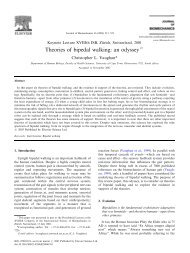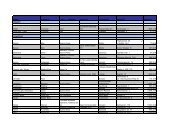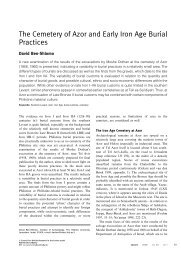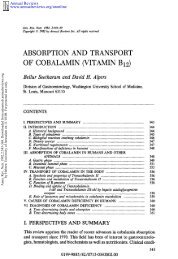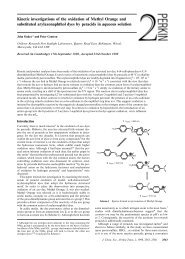The Riddle of Ramat Raḥel: The Archaeology of a Royal Persian ...
The Riddle of Ramat Raḥel: The Archaeology of a Royal Persian ...
The Riddle of Ramat Raḥel: The Archaeology of a Royal Persian ...
You also want an ePaper? Increase the reach of your titles
YUMPU automatically turns print PDFs into web optimized ePapers that Google loves.
19Conclusions<strong>The</strong> new interpretation <strong>of</strong> the stratigraphy and chronology <strong>of</strong> <strong>Ramat</strong> <strong>Raḥel</strong> <strong>of</strong>fers a clear andcoherent answer to the "riddle <strong>of</strong> <strong>Ramat</strong> <strong>Raḥel</strong>" in the <strong>Persian</strong> period. <strong>The</strong> edifice <strong>of</strong> buildingphase II was not destroyed by the Babylonians in the early 6th century BCE, the architecture wasnever razed and the administrative and other activities continued during the 6th century BCE as ithad before. <strong>The</strong> assemblage <strong>of</strong> 6th century BCE pottery, together with 6th century BCE lion andprivate stamp impressions, represent the continued functioning <strong>of</strong> the site during the Babylonianperiod.<strong>The</strong> addition <strong>of</strong> a northwestern wing during the <strong>Persian</strong> period, and the hundreds <strong>of</strong> stampedjar handles discovered at the site, are a clear indication that <strong>Ramat</strong> <strong>Raḥel</strong> reached the zenith <strong>of</strong> itsactivity during the 5th-4th centuries BCE. It seems that the hallmark <strong>of</strong> royal architecture andgrandeur was the unique garden. This well-watered imperial garden and its original floraoriginated in the <strong>Persian</strong> homeland and surrounding areas, and its magnificence location in thisrelatively arid environment, must have left a lasting indelible impression on visitors to the royalsite. Its imported trees from far-<strong>of</strong>f lands, aromatic plants and impressive fruit trees, together withits aesthetic architectural features, symbolized the power and affluence <strong>of</strong> the local rulers whorepresented the <strong>Persian</strong> Empire.It seems that with this combination <strong>of</strong> magnificent edifice and luxurious garden, there is noreason to continue to doubt that during the <strong>Persian</strong> period <strong>Ramat</strong> <strong>Raḥel</strong> served as the edifice <strong>of</strong> theimperial governor in the province. We may carefully suggest that the site was built under Assyrianrule during the late 8th or early 7th century BCE as an administrative center and possibly also asthe place where the Assyrian kepu could inspect the vassal kingdom and supervise its loyalty andthe payment <strong>of</strong> taxes. Under Babylonian rule, the duality between the palace <strong>of</strong> the local governor(in Mizpah) and the administrative center (at <strong>Ramat</strong> <strong>Raḥel</strong>) continued, even though Judah hadalready become a province. This duality is also reflected by the duality between the mwṣh stampedjar handles, most <strong>of</strong> them discovered in Mizpah, probably marking agricultural products from thegovernor's estate in mwṣh (Lipschits 2005: 150-152), and the lion stamped handles, most <strong>of</strong> themdiscovered in <strong>Ramat</strong> <strong>Raḥel</strong>, probably serving as part <strong>of</strong> the province's taxes, as all the othersystems <strong>of</strong> jar handles discovered at this site.Only during the <strong>Persian</strong> period, when Mizpah was deserted and Jerusalem renewed its statusas the lone cultic site, the location <strong>of</strong> the Temple and the seat <strong>of</strong> the priests, did <strong>Ramat</strong> <strong>Raḥel</strong>become both the palace <strong>of</strong> the governor and the main administrative center for collecting taxes.



